Jump to:
Enhancing your property’s curb appeal extends beyond a stunning garden shed exterior. The interior is equally vital. And when it comes to finishes, many are always on the lookout for an economical approach. From shed felt roof repair products to flooring upkeep, every detail matters. But where should you start?
This article offers creative suggestions to elevate your shed from within. If you’re eager to transform it into a more stylish and functional space, read on for inspiration!
1. Plywood
Plywood has a lot of properties that make it great for lining the interior of a wooden shed. Its inherent durability makes it perfect for securely attaching items to the walls.
A range of thicknesses are available, from 3.6mm to 18mm, offering versatility to suit your needs. For sturdier and better insulating properties, we recommend opting for 9mm.
Most suitable for smaller sheds.

2. Drywall
Drywall offers a smooth and attractive shed interior finish. You can paint it any colour or texture you choose or even cover it with wallpaper.
Its superior resistance to fire compared to plywood makes it an excellent material. However, it’s not suitable if the unit doesn’t have a shed vapour barrier.

3. OSB
OSB (Oriented Strand Board) is made of layers of chipped-up lower-grade wood. It has a flaked appearance and bumpy texture.
An ideal choice for underlayering carpets, tile, hardwood flooring, roofs and wall sheathing. If you don’t mind the textured appearance on the walls, OSB is a good choice.
Even better, it’ll provide similar properties to plywood but potentially at a lower cost.

4. Beadboard
Beadboard is a wood panelling featuring long, continuous vertical grooves and raised beads. It is made of fibre cement, giving you a natural wood panelling look.
The material also resists twisting and decaying and prevents wood-damaging insects from your shed. It’s a great alternative if your wooden walls have experienced termite problems before.
It’s a bit pricier than wood, but it’s safer, long-lasting, and requires lesser maintenance.
5. Shiplap
Shiplap is widely used for constructing the exterior of garden buildings, including sheds. It’s known for its cut out grooves, and its easy-to-install properties.
The surface of shiplap is planed smooth meaning you can paint it straight away without any need to sand first.
Warping and rotting are the potential drawbacks. Thus, it won’t be ideal if you live in a humid area.

6. MDF
MDF or Medium-density Fibreboard comprises softwood or hardwood residuals made into wood fibres. It offers a smooth surface and also gives you a room-like feel with minimal work.
The smooth edges make it easy to cut, even for detailed designs. It’s easy to work with and makes a good choice for a DIY shed project.
One thing to note about MDF is that it’ll soak up a lot of water. This could potentially pose a challenge for use in a shed that may, at times, be damp. To avoid this, treat the board with a preserver, treatment, or wood stain shed.
7. Upcycled pallets
Pallets make a great cost-effective option for a shed interior wall. If you’re going for this approach, ensure the pallets are safe for indoor use.
There should be no markings, such as the MB (Methyl Bromide) stamp. Also, don’t use pallets with CP1, CP2, CP3, CP4, and CP5 markings, as they’re used in the chemical industry.
Instead, look for the IPPC marking. This mark ensures that the wood doesn’t have insects or any disease. Plus, HT (heat-treated) and KD (kiln-treated) are safe and aren’t harmful to your health.
Top tip: Don’t miss out on these projects with wood pallets for your next DIY task!

8. Fabric or drop cloths
The fabric might be a workable option if you don’t have the money for drywall. The perk of cloth, particularly for the ceiling, is that it looks unique and gives off a ‘living inside a tent’ vibe.
Along with the low price point and ease of installation, it’s an appealing alternative. Invest in a fabric spray to make it fire-retardant.
9. Pegboards and slat walls
Pegboard is lightweight, cheap, and can be installed directly onto wall studs. It offers convenience and storage of spacecraft supplies, garden tools, and such.
A slat wall system is similar to a pegboard. But they’re a bit more durable for hanging bulkier items like a flexible expanding garden hose pipe.

10. Tin or metal roofing
Metal roofing is lightweight, not a fire hazard, and easy to screw into studs. But the metal is sharp and hard to cut, so you wouldn’t want to expose the edges, especially if you need to trim the panels.
Sheets come in different colours, but we think that simple grey looks best. The downfall is that sound will echo in rooms with this lining.

11. Vinyl siding
Vinyl siding is perfect for DIY – it’s cheap and extremely easy to work with. It’s best to attach to OSB or wood panels for stability.
You can cut it with a saw, or even with tin snips. Moreover, the pieces of siding interlock, which makes them secure and quick to install.
As long as the shed is structurally sound, you can cover it with vinyl siding.
12. Veneer plaster
Veneer plaster is a good alternative and comes closest to traditional drywall. It doesn’t require as much skill or as many tools as hanging drywall does, but it’s a time-consuming option.
13. Lath & plaster
Like veneer plaster, you can combine laths and then coat them in plaster. Laths are narrow strips of wood installed horizontally between studs or ceiling joists.
It’s a mediaeval wattle and daub style, great for adding some texture to the wall. If you have non-flat walls, like a curved surface in the corner of the room, lath & plaster will work well.

14. Wahoo walls
If you’re trying to cover a wall made of cinder block or concrete, go for Wahoo walls. It’s a basement wall finishing system that’s also ideal for sheds.
It mimics the look of drywall and is moisture resistant. Plus, you don’t have to screw it into the wall; these panels click together.
15. Keep it bare
Consider whether interior walls are needed or not. If you’re just using your shed for storage, it’ll probably be fine without the extra insulation and cover.
But if you plan on spending more time in your shed, say, during winter, it’s better to have an interior wall and insulate it. This is also essential if you store sensitive items in cold temperatures.
In the long run, you may be able to save money compared to running an electric garden heater in an uninsulated shed.

Shed Interior Walls: Round-up
Lining the shed’s interior walls offers tons of benefits. For one, it helps improve the overall appearance inside and, at the same time, reduces heat loss. Installing shed interior walls is also straightforward, and you can even do it on your own.
Garden sheds don’t usually come with any material on the interior walls. The wooden framing for the structure features exterior cladding of T&G timber. This leaves the interior open and untreated. Speaking of treatments, BillyOh offers pressure-treated options for all types of outdoor buildings.
Check out this related post: Corner Shed Ideas to Make the Most of Your Garden
Shop Garden ShedsFAQs
What can I use for interior shed walls?
Experts do agree that the best material for a shed interior wall is plywood. At least at 9mm or OSB at 12mm. Both provide a solid internal structure that can survive bumps and knocks.
Should I drywall my shed?
Drywall can withstand fire better than a wood product. With primer and paint, it's going to be resistant to water damage, but not completely.
What can I use on walls instead of drywall?
Wood planks are an age-old drywall alternative that has stood the test of time well. You can also opt for veneer plaster or lath & plaster.
What is the cheapest interior wall?
Drywall is a pretty cheap option for a shed wall interior. A sheet can cost anywhere from £9 to £15, depending on the size, and the installation per sq. foot is about £1.50.
Can you use plasterboard in a shed?
Plasterboards can be used to line the interior walls of a shed or summer house. But only if the structure has been insulated and has a vapour barrier in place.
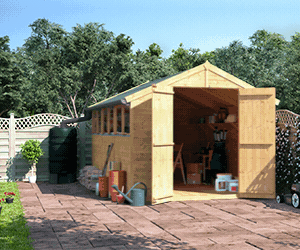
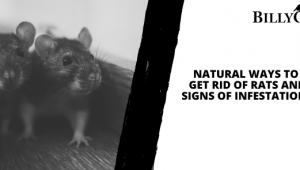
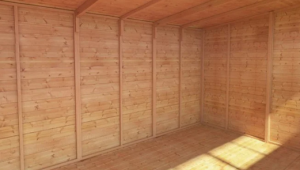
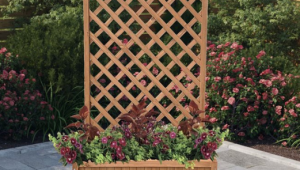
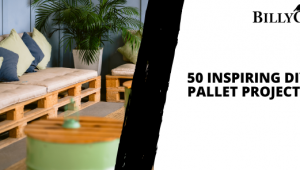
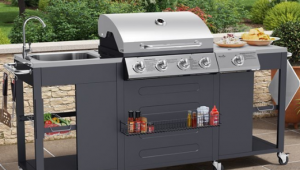

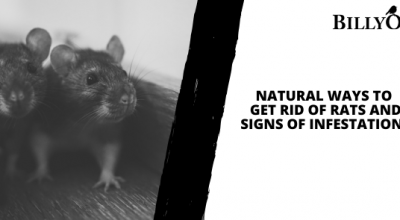
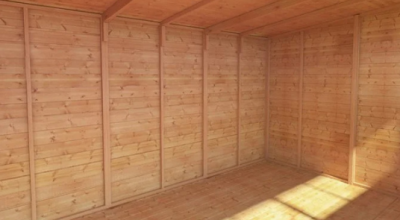
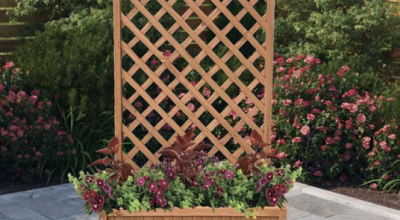
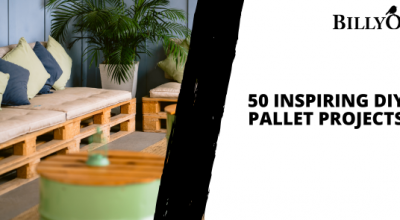
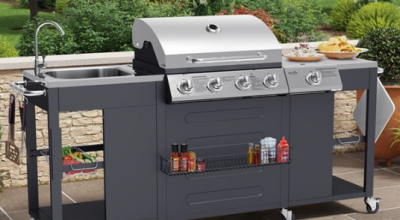
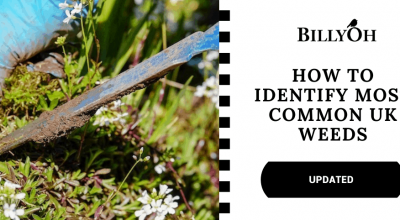
What do you think ?